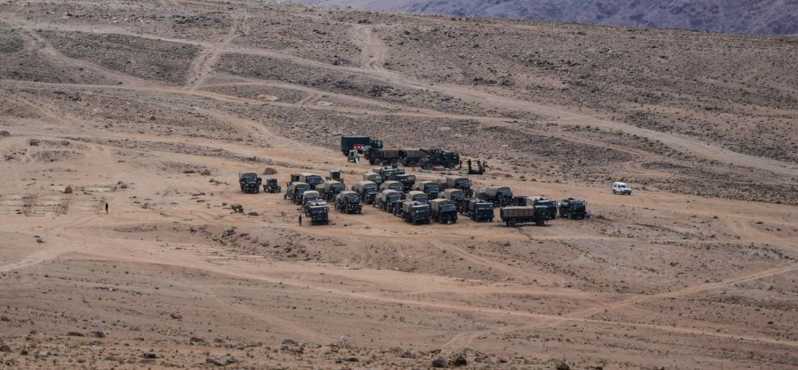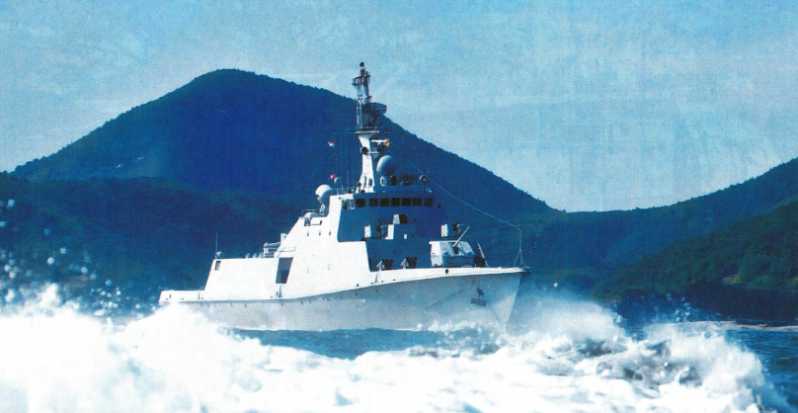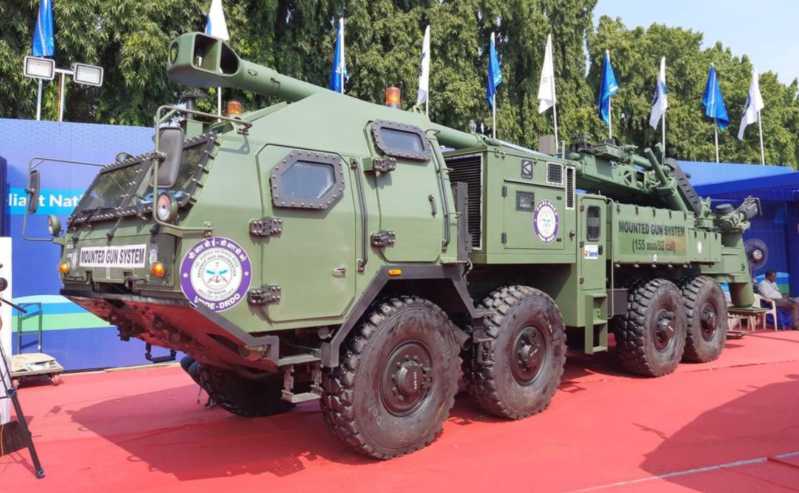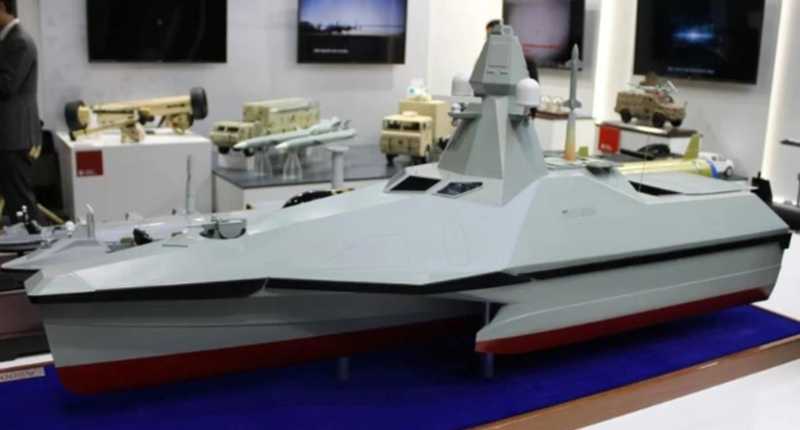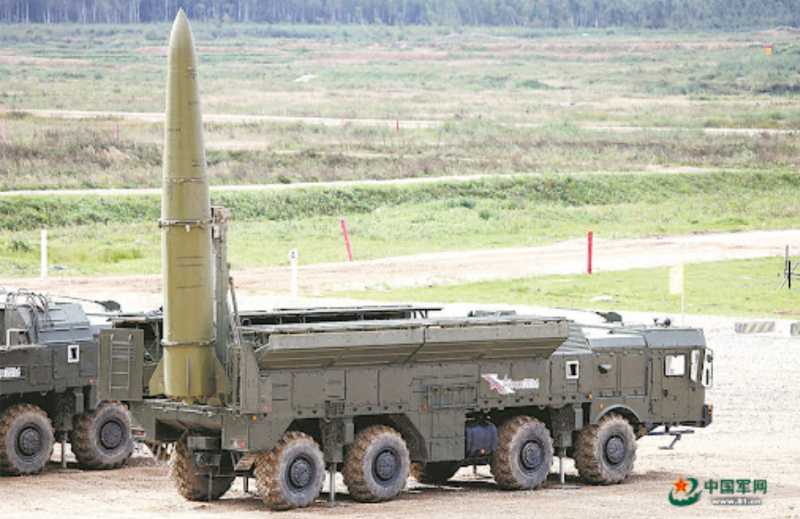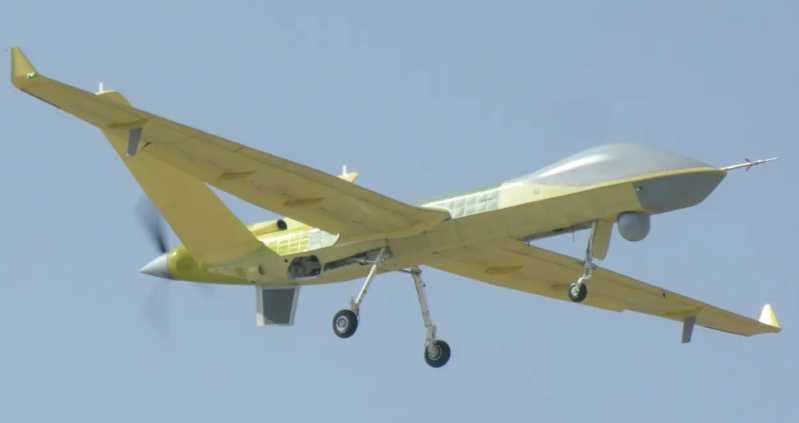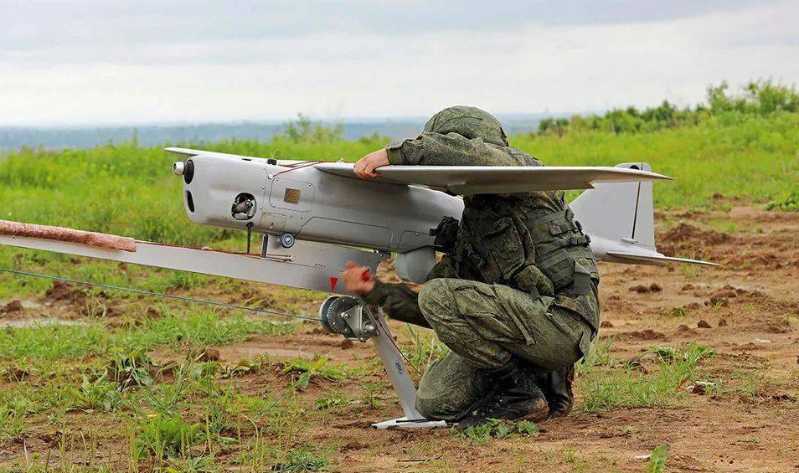Anyone with knowledge of military history knows that troops must first consider supply issues when they move. The ancients said, "Before the troops move, the food and grass must go first." Areas with harsh natural conditions and difficult supply are often regarded as forbidden areas for conquest. Tibet is the highest altitude area in the world. Most outsiders regard it as a "life restricted area" and it has always been regarded as a daunting place for military strategists. After the founding of New China, the People’s Liberation Army advanced while building roads, completing the historic feat of liberating Tibet and suppressing the rebellion. Then, it fought a self-defense counterattack on the battlefield with the highest altitude in the world, showing the prestige of the country and the military. In addition to the bravery of the front-line commanders and fighters, the key factor in achieving these victories is the achievements in road construction. It can be said that the road conditions determine what kind of war can be fought in Tibet. The development of Tibet’s construction in the following decades has led to the completion of a modern transportation system, which can make the southwestern border defense a solid copper wall.
If you don’t build a road, marching into Tibet is equivalent to being exiled
The Qinghai-Tibet Plateau has an average altitude of more than 4,000 meters. Historically, it was sparsely populated and had only a few narrow paths. Although it was under the jurisdiction of the central government in the interior in ancient times, it was difficult for foreign troops to enter and stay there permanently. In 1253, Kublai Khan, the grandson of Genghis Khan, led a powerful Mongolian cavalry from the northwest to the Yunnan-Guizhou region, relying on horses to eat grass along the way and people to eat horse meat, and then quickly crossed the Qinghai-Tibet Plateau. In the 18th century, the wealthy Qianjiang Dynasty sent 10,000 troops to Tibet to quell the civil unrest in Tibet (only 2,000 Mongolian soldiers were fighting on the front line). They had to use cattle, horses, and camels to cross thousands of miles of ice and snow mountains to supply them. The transportation fee to the end point was equivalent to the price of silver of the same weight, which consumed a quarter of the country’s fiscal revenue in one year. After the rebellion was quelled, the Mongolian soldiers had to be withdrawn and the local Tibetan troops were still stationed. In 1910, Zhao Erfeng, the governor of Sichuan during the Qing Dynasty, sent 5,000 Sichuan troops to Tibet to quell the rebellion. Due to the supply cut off, they were "mediated" by the British and were sent back to the mainland through the Indian border by British ships after disarming. After the Burma Road was cut off by the Japanese army in 1942, Chiang Kai-shek sent Liu Wenhui’s 24th Army from Xikang to Tibet, but gave up because of the difficulty in solving the supply problem. The reactionary forces in the upper class of Tibet took advantage of the difficulty of entering Tibet from the mainland and dared to collude with Britain to carry out separatist activities.
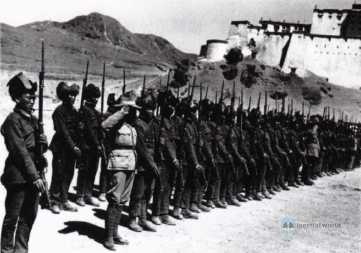
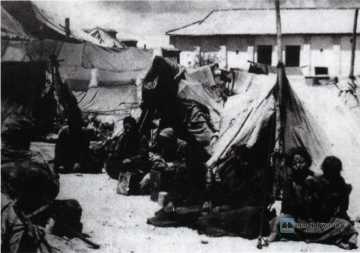
After conquering India, Britain thought of sending troops north to control Tibet, and the road from northern India to Tibet was easy and short. However, when the British Expeditionary Force entered Tibet in 1904, according to the calculation of Lieutenant Colonel Younghusband, the troops departing from Kalimpong on the border mainly relied on mules and horses to transport supplies. A fully loaded mule would only have less than 3 kilograms (6 pounds) left when it arrived in Gyangze. If the army could not be supplied locally, it would starve to death. After entering the southern Tibet area, the British army did not dare to stay for too long, and retreated before the snow fell. Only two battalions of Indian soldiers remained for a long time, relying on the transportation of goods by passing Indian merchants and the collection of grain locally. After that, they relied on the policy of buying and winning over the upper class of Tibet to control the plateau. After India’s independence in 1947, it inherited the mantle of British colonists and privileges in Tibet. The separatist forces in the upper class of Tibet also set off a wave of shouting for "independence" when the Chinese Liberation War was victorious. After the founding of New China, in order to solve the Tibetan issue, it was necessary to march troops, and political struggle could only be achieved under strong military pressure.
In January 1950, Mao Zedong issued an order to march into Tibet. At that time, Tibet had a total population of only 1.2 million, and the productivity level was extremely low. The meager harvest had to support the lamas who accounted for one-tenth of the total population of Tibet and many military and political officials. The Tibetans themselves did not have enough food, so they had to import food from Nepal in the form of "salt-grain exchange" as a supplement. The Central Military Commission fully considered that there was no local supply there, and proposed "marching into Tibet without eating local food". The deployment of the Southwest Military Region was "one person entering Tibet, ten people supporting". From spring to autumn of the same year, the 18th Army of the People’s Liberation Army marched from Xikang to the Jinsha River. The Southwest Military Region mobilized most of the engineers and requisitioned tens of thousands of civilian workers to build a road from Kangding to the west. After the advance troops entered Ganzi, they ran out of food because the road was not kept up. Mao Zedong instructed the Air Force to send planes for airdrop immediately. The North China Military Region and the Southwest Air Force urgently selected 10 planes to form an air transport team, implementing the first air supply support in the history of the People’s Liberation Army. In August of the same year, under the extremely tight financial situation of the state, Mao Zedong and Zhou Enlai specially approved the purchase of 42 transport planes from the Soviet Union. In November of the same year, a high-altitude transport regiment was formed (later expanded into the 13th Air Force Division) to undertake the task of airdrop support for the troops entering Tibet. However, the air transport capacity was limited at that time, and the transportation line was too long, so the supply to Tibet mainly relied on building roads.
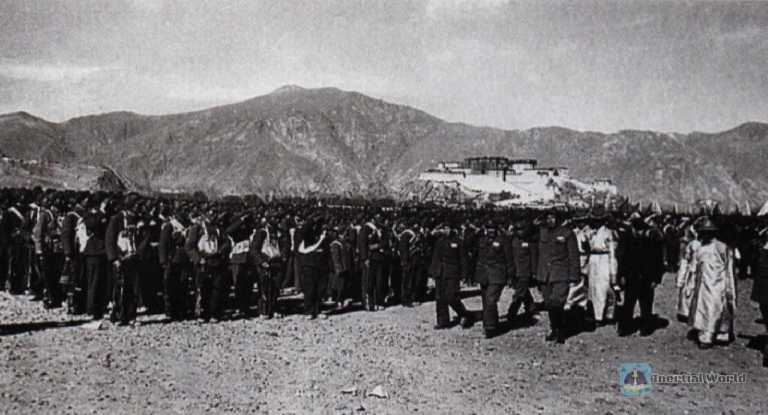
After the People’s Liberation Army annihilated the main force of the Tibetan Army in the Battle of Chamdo, in May 1951, representatives of the Lhasa Kashag government signed the "Seventeen-Point Agreement" for the peaceful liberation of Tibet with the central government. Subsequently, the 18th Army Headquarters and the 52nd Division of the People’s Liberation Army carried 10,000 people on their shoulders, carried by mules and horses, and airdropped to carry supplies: they trekked thousands of miles from the Jinsha River to Lhasa, and the 53rd and 54th Divisions and several engineering regiments of the Southwest Military Region and tens of thousands of Han and Tibetan civilian workers built roads. At this time, Mao Zedong summarized that the liberation of Tibet was mainly a matter of road construction. Wherever the road was built, there would be liberation.
After three months of marching that was said to be as difficult as the Long March, the 18th Army’s advance troops of more than 10,000 people entered Lhasa, and then divided their troops into Shigatse and Yadong on the border. The 100,000-man army that built the road from Xikang to Tibet was blocked by the harsh geological conditions of the Hengduan Mountains and made slow progress. The take-off airport of the 13th Division of the People’s Liberation Army Air Force, which was specially used to support the entry into Tibet, was still in Xinjin, Sichuan. The airdrop line could only extend to Taizhao, about 200 kilometers east of Lhasa. The carrying capacity was greatly reduced due to the increased fuel consumption in round trips, so they had to use silver dollars to purchase grain locally.
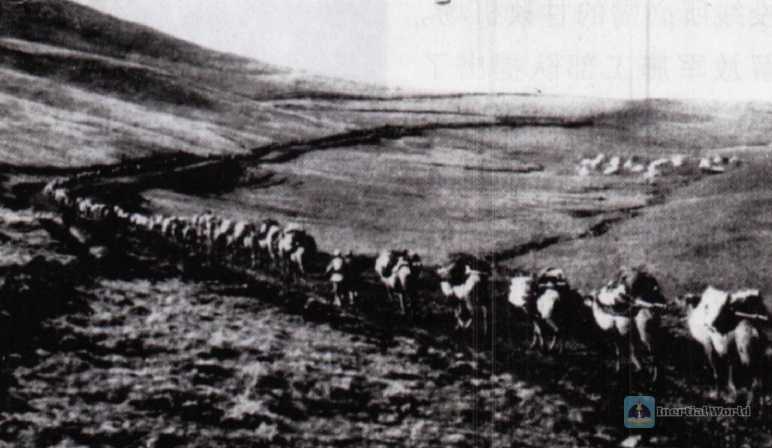
After the People’s Liberation Army entered Lhasa and other places, the reactionary upper class maliciously prevented local merchants from selling grain to the troops, and wanted to use the method of "starving" to drive out the "Red Han people". Although there were patriotic people supporting them at that time, there was not much surplus food in the local area, and many troops were in a state of hunger and fullness. In addition, when entering Tibet, the officers and soldiers took the narrow path, carrying only infantry weapons, and could not bring more bullets. If they encountered fierce fighting, they could not replenish ammunition, and it was difficult to attack because there were no artillery. Under this circumstance, if the People’s Liberation Army entered Tibet, it had to solve the supply problem first if it wanted to gain a foothold, otherwise it would be impossible to carry out reforms, expel the Indian troops stationed in Tibet, and advance to the border line.
Because it would take three or four years to repair the road, the Central Committee required the Northwest Bureau to organize a transport corps to support Tibet first, and transport grain to Tibet by camel. At that time, there were more than 200,000 camels in the country. The Northwest Transport Corps bought 26,000 strong camels at one time, and hired civilian workers to travel thousands of miles to transport them. But camels have long legs and are only used to eating tall grass in the desert. They cannot eat the short grass on the Qinghai-Tibet Plateau. The road is desolate and there is no grass. As a result, many camels died on the way, and the task of transporting grain could not be completed. Hiring yaks to transport grain from Ya’an, the capital of Xikang, to the interior of Tibet could only go back and forth once a year. The grain was barely enough to support the road-building troops, and it was difficult to send it westward. Therefore, the plan to transport grain from Qinghai and Sichuan could not be completed.
At this time, China and India had established diplomatic relations. Due to domestic famine, India imported more than 600,000 tons of grain from China from 1952 to 1953. The Chinese government negotiated with the Indian government to ship part of the grain from the southern sea of China to the Indian port of Kolkata, and then the Indian side transported it by rail to Kalimpong on the India-Sinki border, and finally transported it to Yadong, Tibet by mules and horses and manpower. Practice has proved that the grain transported in this way has been delayed for a long time on the way, and most of it has been moldy and deteriorated due to wind and rain, and India still charges high freight. The silver dollars spent on transporting to Tibet in the past two years are almost the same as the weight of the grain transported, and a considerable part of the silver dollars reserved by the Bank of China are used to maintain the troops stationed in Tibet. In this regard, Zhang Jingwu, the representative of the Central Government in Tibet, once said with emotion: "We are living on silver!"
Faced with the dilemma, Chen Mingyi, the commander of the rear headquarters of the People’s Liberation Army entering Tibet, urgently reflected: "If the road is not built, marching into Tibet is equivalent to being exiled! When fighting against the United States and aiding Korea in the east, the central government also concentrated a considerable part of the domestic engineering and technical forces to repair the Kangzang Highway. At this moment, the people of the whole country are also paying attention to the progress of opening up the key passes of Erlang Mountain and Queer Mountain. The song "Er Ya Ma Erlang Mountain, high and high" resounded throughout China, and the last line of the lyrics was--"We must build that road to Tibet!"
The completion of the Kangzang and Qingzang highways provided a lifeline for the garrison
From the autumn of 1950 to In the autumn of 1954, the construction of the Kangzang Highway has always been a key project of the country. At the same time, the Ganzi Airport, which was necessary for extending the airdrop line to the hinterland of Tibet, was repaired. The PLA construction troops put forward the slogan of "The motherland needs me, and the infantry becomes engineers". After opening up Erlang Mountain, they opened up the dangerous Queer Mountain in early 1952 under the conditions of cold and thin air by burning frozen soil and blasting in turns, extending the highway to Qamdo. Subsequently, the construction army opened up more than ten snow-capped mountains, implemented forced crossing during the flood season in the summer of 1953, and built a steel frame bridge over the natural Nujiang River. In the summer of 1954, when the construction troops arrived at the Bomi Forest Canyon, they encountered a glacier eruption, and mudslides surged. Several bridges and dozens of miles of roads were destroyed, and many people were swallowed up. In the harsh environment, the troops insisted on construction in the heavy rain: continuing to extend the highway westward by changing the route.
In order to speed up the construction of the Kangzang Line, the 18th Army and part of the 52nd Division stationed in Lhasa built a road to the east after the spring of 1953, and hired Tibetan workers from 48 zongs (counties) with high salaries in cash to participate in the construction. Due to the inconvenient transportation in Lhasa and its vicinity and the interior, the construction soldiers and civilians lacked equipment and could only use primitive tools. Food supply was even more difficult. Some troops worked 8 to 10 hours a day but could only receive 200 grams of food, mainly relying on wild vegetables to fill their stomachs. The "Old Tibet Spirit" forged under such conditions has become a valuable spiritual wealth advocated by the CPC Central Committee to the whole party and the whole army for decades.


On November 27, 1954, the east-west road construction troops in Tibet successfully joined forces at the Bahe River. The 2,255-kilometer Kangzang Highway (later renamed the Sichuan-Tibet Highway due to the cancellation of Xikang Province) was fully connected. The cost of the construction of the road was the sacrifice of more than 3,000 troops and civilian workers. The Kangzang Highway was built on a plateau with an altitude of 3,000 to 5,000 meters. A total of 29 million cubic meters of earthwork was completed. It is the most difficult highway among the routes into Tibet, and it is also an unprecedented feat in the history of highway construction in China and even the world. Since ancient times, another main road to Tibet is through Qinghai. Princess Wencheng and envoys after the Tang Dynasty often took this route. When the cavalry detachment of the Northwest Military Region entered Tibet in 1951, engineering and surveying personnel came here to survey the route. Two years later, when Mu Shengzhong, the Organization Minister of the Tibet Working Committee, served as the political commissar of the Northwest Transport Team, he organized camels to transport grain to Tibet from Qinghai, and found that the further west he went, the easier it was to go. Although the altitude south of Golmud is over 4,000 meters, the mountains are not very steep, and there are many relatively flat Gobi areas on the way. After Mu Shengzhong reported to Beijing, because there was no budget for this in the national plan, Peng Dehuai allocated 300,000 yuan of funds, 10 ten-wheel trucks and 1 jeep from the military budget, and asked him to lead 1,200 civilian workers to form a road construction team. From May 1954, they began to explore the construction of roads to Lhasa from the Golmud direction. At this time, Mu Shengzhong became the creator of miracles on the plateau. After he led the road construction team into the uninhabited area of 1,000 miles, he broke the routine, opened the road while measuring, and repaired while walking. Only two months later, he unexpectedly arrived in Hoh Xil with his car. After Peng Dehuai learned the good news, he dispatched 1,000 engineers and 100 trucks to advance southwestward at an extraordinary speed under the unified command of Mu Shengzhong. When the rations on the vehicles ran out, they hunted wild donkeys and wild sheep in the Kunlun Mountains to fill their stomachs. With the spirit of "fighting to the death", they opened up the Tanggula Mountains at an altitude of 5,000 meters and built a section of the highest highway in the world at that time. At this time, two engineering regiments transferred from the northwest and Lhasa arrived, and the Qinghai-Tibet Highway was finally built to Lhasa on December 15, 1954. Although it was just a simple road, it was still regarded as a miracle, and the international community also called it amazing news.
On December 25, 1954, a grand ceremony was held for the opening of the Kangzang and Qingzang highways to Lhasa. Mao Zedong happily wrote an inscription: "Celebrate the opening of the Kangzang and Qingzang highways, consolidate the unity of the people of all ethnic groups, and build the motherland!" The Ministry of Communications imported 1,000 trucks from the Soviet Union for this purpose, most of which were responsible for the transportation tasks of the two lines. Because the Qingzang Highway was originally a simple highway, the state specially allocated forces to build it according to the standards of a regular road the following year. In addition, this line was not threatened by mudslides and avalanches, making it easier to open to traffic, and subsequently became the main line for transportation into Tibet.
In order to ensure the supply of troops stationed in Aksai Chin and Ali area of Tibet from Xinjiang, in 1955, the Xinjiang Transportation Department and the Xinjiang Military Region jointly organized forces to build a 1,179-kilometer highway from Yecheng to Gadake, Tibet, which was finally completed in October 1957. This played an important role in consolidating the defense of the western part of the country, especially the defense of the western section of the Sino-Indian border. Considering that this highway was protected by southern Xinjiang, the Ali region and the western section of the Sino-Indian border were also assigned to the defense of the Xinjiang Military Region for decades.
After the Kangzang and Qingzang highways were opened to traffic, they became the lifeline of the PLA troops stationed in Tibet. The local reactionary separatist forces’ dream of "expelling the Han people" was completely bankrupt. Since then, the transportation from the mainland to Tibet is no longer subject to India, and the Chinese government can also require the two Indian army battalions stationed in Tibet to withdraw in 1954 and hand over their post stations and other facilities in Tibet (China will provide appropriate compensation). When the Kangzang and Qingzang highways were first built, they were gravel roads. The Kangzang highway was often blocked in winter and rainy season, and the driving speed was generally only 20 kilometers per hour. It was also inconvenient to drive at night. The average daily maximum transportation volume of the two roads into Tibet was 200 to 300 tons, which could meet the daily needs of tens of thousands of troops and local staff entering Tibet (in non-wartime, each person needs about 3 to 4 kilograms of supplies per day). From then on, the situation of "hunger" and difficulty in replenishing weapons for troops entering Tibet was fundamentally solved.
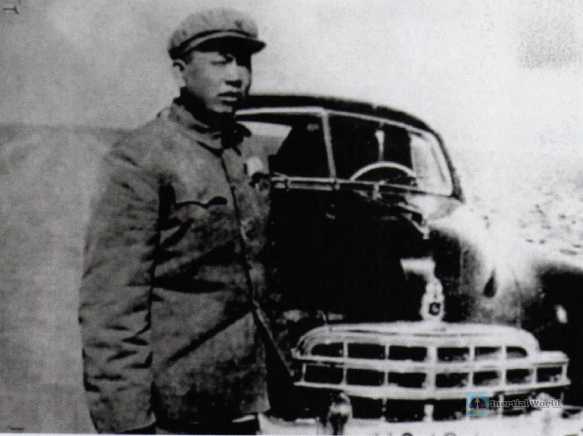
Thanks to the road transportation guarantee, the troops of the Tibet Military Region were finally able to obtain heavy weapons and basically implemented the organization of the inland national defense army. In particular, the presence of artillery greatly enhanced the combat effectiveness. Because of the trunk roads available for mobility, the Tibet Military Region was equipped with an artillery regiment towed by Soviet-made GAZ cars - the 308th Artillery Regiment, which had three battalions, each equipped with a 122mm howitzer, a 120mm heavy mortar and a 76mm cannon (all equipment produced by the Soviet Union during World War II), becoming the firepower fist of the troops stationed in Tibet. Each infantry regiment was basically equipped with Soviet-made or Soviet-style equipment. The main infantry weapons were the Guoliunov heavy machine gun, the Depu light machine gun, the Mosin-Nagant rifle (the above three types were all copied from the Type 53) and the PPSh submachine gun (the copy was the Type 50). Because the Soviet Union had not paid much attention to the development of recoilless guns before, and the Qinghai-Tibet Plateau needed such weapons, the Chongqing Arsenal imitated the equipment delivered by the United States during the "Hump Air Transport" during the Anti-Japanese War, and made 75mm and 57mm recoilless guns, most of which were carried by mules and horses, and together with the 82mm mortar, they became the backbone firepower of the infantry regiments stationed in Tibet.

After the road to Tibet was built, in order to solve emergency transportation and air fire support, the PLA Air Force went to Qinghai and Tibet for surveys from 1955, and built forward airports such as Xining, Yushu, and Golmud in Qinghai by transporting materials by road, and built the first airport in Tibet in Dangxiong, north of Lhasa. When Dangxiong Airport was built in 1956, due to the difficulty in transporting cement and other materials from the inland to the plateau, its runway was paved with sand and soil, and could only be used for propeller planes to take off and land, and Il-14 and other passenger planes and transport planes could fly. The three airports in Qinghai with better runways can guarantee the take-off and landing of Soviet-made Tu-2 and Tu-4 bombers. Their combat radius can cover the whole of Tibet. In wartime, they can bomb the enemy and provide airdrop support to their own side, which provides important guarantee for the subsequent counterinsurgency and border self-defense counterattack.
"Controlling the two lines" became the premise for quelling the rebellion
After the PLA entered Tibet, according to the provisions of the "Seventeen-Point Agreement", it went through an "eight-year waiting" period, that is, not changing the dark serfdom of theocracy in Tibet, and striving for the transformation of the upper aristocracy through united front work. After the construction of the Kangzang and Qingzang highways, some central departments had envisioned reforms in Tibet and sent more cadres to Tibet for this purpose. In 1955, the total number of troops stationed in Tibet and the road construction troops entering Tibet exceeded 50,000. In addition, a large number of cadres from the mainland entered Tibet, and road transportation felt a little tense. In addition, the freight costs of plateau roads were high. At that time, it was calculated that the cost of supporting one soldier in Tibet was equivalent to supporting seven soldiers in the mainland.
In 1956, the Preparatory Committee for the Tibet Autonomous Region was established, and panic broke out among the upper class nobles in Tibet. At this time, the central government believed that the time was not yet ripe for reform in Tibet, and a "contraction" policy should be adopted, so the number of people stationed in Tibet was greatly reduced to reduce the burden. The subordinate troops of the Tibet Military Region formed by the 18th Army Headquarters were reduced to 18,000, and only a few thousand cadres were left in Tibet, and the rest of the people who entered Tibet were withdrawn as soon as possible. The central government hoped to achieve relaxation by postponing reforms, and strive for the upper class of Tibet to accept the "peaceful redemption" policy in the future to change the serfdom system. The reactionary serf owner group who stubbornly adhered to the old system was extremely hostile to the new things brought by the PLA’s entry into Tibet. After the central government announced the "six-year no change" policy in 1956, they arrogantly demanded "never change". They also secretly colluded with the US authorities and certain forces in India, secretly organized armed forces to carry out separatist activities, and the local rebellion in Tibet gradually developed into a global rebellion.
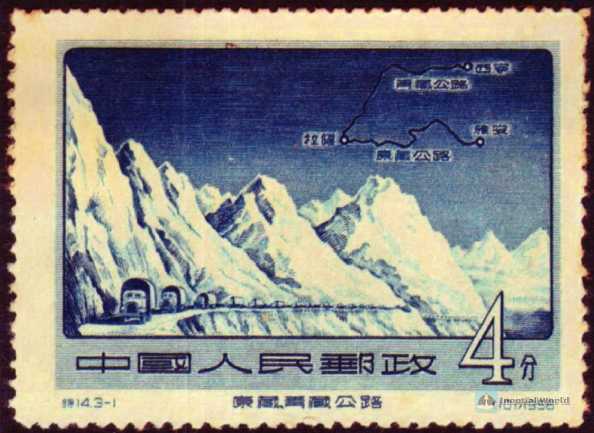
According to the deployment of the Tibetan upper reactionary group and foreign forces, they used the Jinsha River as the boundary and implemented the deployment of "military in the east of the river and cultural in the west of the river" to launch a large-scale "Khamba Rebellion" in the Tibetan areas of western Sichuan in the spring of 1956. The Chengdu Military Region of the People’s Liberation Army successively deployed more than 60,000 troops to fight against the rebellion. In April 1957, Chief of the General Staff Su Yu also went to inspect the combat area in western Sichuan and personally determined the combat strategy. By the spring of 1958, most of the Khamba rebels, who were known for their strongest strength in the Tibetan areas, were eliminated, and thousands of people fled to the west of the Jinsha River, hiding in some temples and serf owners’ manors and receiving shelter. After these bandits were replenished with supplies locally, in addition to killing local cadres and activists, they focused on attacking the PLA highway transportation lines in Tibet. The road protection operation thus opened the prelude to the suppression of the rebellion in Tibet. Seeing that the reactionary upper class in Tibet was ready to make a move and harbored the Kham rebels, the Tibet Military Region emphasized that cars should be armed when going out, and should travel in groups of multiple cars. On July 21, 1958, the rebel armed forces were preparing to ambush the convoy of the 8th Company of the 16th Motor Vehicle Regiment of the Tibet Military Region west of Gesang. Later, seeing that there were many cars and strong forces, they did not dare to attack. Finally, they ambushed a car that had fallen behind, killed the driver and burned the car. This ambush became the beginning of the armed rebellion in the area under the jurisdiction of the Tibetan local government.
On September 17 of the same year, the outpatient department of the Tibet Military Region was ordered to send people from Lhasa to Shigatse to conduct a physical examination for the 160th group. Because they ignored the danger and let 16 male and female medical staff set off in a car, they were ambushed by more than 100 rebels. After half an hour of fierce fighting, all the people in the car died and the car was burned. The Tibet Military Region of the People’s Liberation Army dispatched troops to hunt down the rebels roaming east of Lhasa and Qamdo, and the traffic on the Sichuan-Tibet Road was guaranteed. However, at that time, the number of organized rebel core members in Tibet had reached more than 20,000, of which one-third were Kham rebels with long-term combat experience. The PLA troops stationed in Tibet were too few to fully launch a counterinsurgency campaign, and the local rebellion intensified under the secret instigation of the Kashag government.
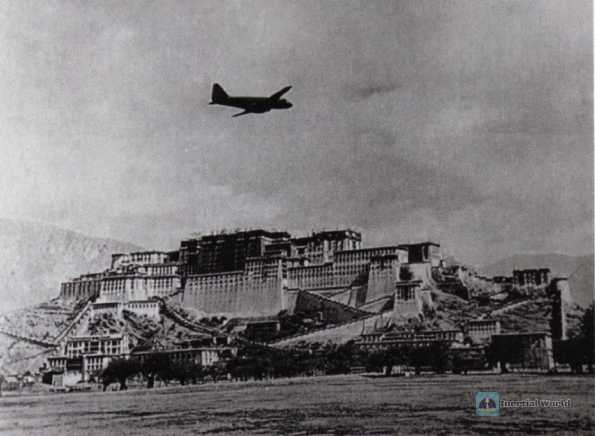
At the end of 1958, the rebels cut off the PLA Shannan troops and agencies stationed south of the Yarlung Zangbo River from Lhasa. The Tibet Military Region sent reinforcements to the south in the form of a multi-vehicle team, but they were ambushed by intensive machine gun fire from the mountains in the steep mountains and near the river, and the counterattack fire from the troops on the road was difficult to suppress the rebels who were high above. In two ambushes in mid-December, the PLA lost the deputy commander and battalion commander of the 155th Regiment, 93 officers and soldiers below the deputy director of the Shannan Sub-Working Committee, and local cadres, and 35 were injured. This was the most serious combat loss since entering Tibet. Because the road was blocked and reinforcements were temporarily unavailable, the Shannan Sub-Working Committee of the Communist Party of China stationed in Zedang and a battalion of garrison troops fought a three-month Shannan defense war surrounded by thousands of rebels, defended the main strongholds, and finally waited for the large force from the mainland to come to support.
By the beginning of 1959, in addition to Zedang Town, some remote county party committees and garrison units in Tibet were also surrounded by rebels. Reinforcements through the long roads would be ambushed again, and they could only rely on the previously stockpiled supplies to hold on. To support these besieged points, the Central Military Commission mobilized the only Tu-4 heavy bomber regiment in the entire army to station at airports in Qinghai and Sichuan, implementing air support rarely seen in the PLA’s war history.
The Tu-4 bomber was copied by the Soviet Union after it detained the US B-29 heavy bomber that made an emergency landing in its Far East during World War II. It can carry up to 9 tons of bombs, has a speed of 557 kilometers per hour, and a range of more than 6,000 kilometers. After the emergence of jet fighters, these heavy and slow large aircraft have been difficult to penetrate. The People’s Liberation Army only introduced 10 after 1954 and formed a regiment as an "air fist". When suppressing the rebellion in Tibet, it just played its advantages of long range and long air time. After taking off from Xinjin Airport in Sichuan, Xining and Golmud Airports in Qinghai, the Tu-4 can reach various points in Tibet and patrol for a long time. After arriving at the besieged area, the Tu-4 first threw leaflets to persuade, and then dropped bombs when it was ineffective. Most of the rebels were ignorant and superstitious, and regarded the plane as a "sacred eagle". When they saw the low-altitude attack and the bombing, most of them were terrified and fled. However, the PLA’s airdrop and air transport capabilities were still very limited at the time, and maintaining the supply of the Tibetan garrison and agencies depended on ensuring road safety.
Before the full suppression of the rebellion in March 1959, the Tibet Military Region had only five infantry regiments, and together with the military region agencies and logistics personnel, the total number of troops was less than 20,000 (Western media used rumors from Tibetan reactionary forces for many years to say that "the Chinese Communist Party has 300,000 troops stationed in Tibet", which is pure nonsense that violates basic logistics knowledge). They were distributed in key points such as Lhasa, Shigatse, Gyantse, Yadong, Qamdo, and Tsetang, and the two main transportation arteries of Sichuan-Tibet and Qinghai-Tibet. Seeing the growing rebellion, the General Staff put forward the slogan of "holding three points, controlling two lines, all parties working hard, and preparing for a decisive battle." "Holding three points" means that the three key points of Lhasa, Heihe (Nagqu), and Qamdo must be held. "Controlling two lines" means that the two supply lifelines of the Tibetan garrison and agencies, the Sichuan-Tibet Highway and the Qinghai-Tibet Highway, must be ensured to be unobstructed.
The key to advancing into and liberating Tibet is to build roads, and to quell the rebellion and implement democratic reforms is to protect roads. It is precisely because the two major arteries into Tibet remained unobstructed under the harassment of the rebels that the five-star red flag that had been raised on the snow-capped plateau could always fly.
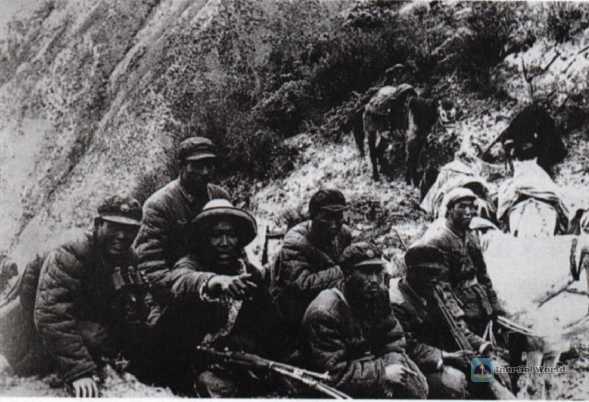
Rely on and improve the road network in the process of suppressing the rebellion
After the Central People’s Government reached the "Seventeen-Point Agreement" for peaceful liberation, it adopted a long-term waiting policy for the Tibetan upper group. Mao Zedong, Zhou Enlai and other party and state leaders also personally persuaded the Tibetan upper representatives headed by the Dalai Lama, hoping that they would voluntarily carry out reforms. The PLA troops stationed in Tibet and the government agencies stationed in Tibet took the most righteous efforts to win over the Kashag regime, and the garrison insisted on not firing the first shot. The rebels, however, regarded tolerance as weakness and were supported by anti-China forces in the United States and India. On March 10, 1959, they publicly announced an "uprising" and "expelling the Han people" in Lhasa. The Dalai Lama then fled abroad with the support of the reactionary upper-class nobles in Tibet.
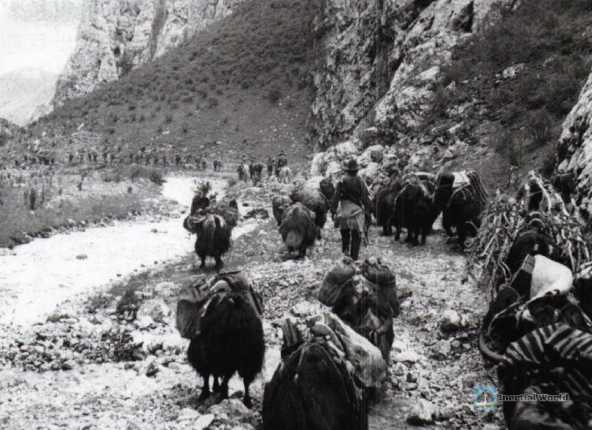
When the Lhasa riots broke out, more than 7,000 rebels from Kham and other places poured into the city, and tens of thousands of lamas were issued guns and organized into combat groups. At this time, the PLA’s combat forces stationed in Lhasa had only 13 infantry companies, in addition to a light armored company, the 308th Artillery Regiment, the Motor Vehicle Regiment and the logistics department. Together with non-combat personnel, the total force was only more than 3,000 people. However, the People’s Liberation Army has advantages in politics and military quality, and its artillery firepower can destroy the enemy’s main strongholds. The armored vehicles made in Sichuan by welding steel plates from heavy-duty trucks can move on the road without fear of the rebels’ blockades, and thus can quickly win with a smaller force.
Faced with the siege and armed provocation of the rebels in Lhasa, the Tibet Military Region, unable to bear it any longer, began the counterinsurgency battle on March 20. As a large number of artillery shells could be transported by road before, after the battle started, the 308th Artillery Regiment first used 122mm howitzers and 76mm cannons to conduct a two-hour fire preparation on Yaowang Mountain, the commanding height of the entire city, and bombed the Tibetan troops entrenched on the top of the mountain to death or escape, and then easily captured the top of the mountain with an infantry company. Then, the PLA set up an observation point on the top of Yaowang Mountain to indicate the target for the artillery, and used a large amount of slow-moving barrage of bullets to attack the rebels in the open space in the city, causing them to flee in all directions. The next day, the PLA moved into the city to quell the rebellion. In order to reduce damage and casualties, it mainly used 120mm heavy mortars, and usually carried out warning shots first to force the enemy to surrender. At that time, the central government emphasized that the Potala Palace should not be damaged, so the military region concentrated the infantry regiment’s 57mm recoilless guns and accurately shot at its windows, launching a threatening attack that could not be seen from the outside. On March 22, the rebels in the Potala Palace, who were commanding the rebellion in the entire city, hung up the white flag and surrendered. The rebellion in the entire city was over, and the remaining bandits fled to various parts of Tibet. After the battle in Lhasa ended, the 54th Army of the People’s Liberation Army and the 11th Division of the Lanzhou Military Region quickly entered Tibet by car and launched a rebellion in the entire region.
After the reactionary upper class in Tibet fled, they commanded the rebel armed forces in the entire region to launch a "guerrilla war" abroad. The US Central Intelligence Agency airdropped newly trained Tibetan spies to serve as commanders of major groups of rebels, and continued to airdrop weapons for support. At this time, the relevant departments of the United States calculated that Tibet (excluding the Tibetan areas in neighboring provinces) could mobilize 100,000 "guerrillas". According to the proportion of anti-guerrilla warfare, at least 300,000 regular troops were needed to deal with it. The Chinese government could only rely on the two sandy roads into Tibet, Sichuan-Tibet and Qinghai-Tibet (Xinzang Road only goes to Ali in northwest Tibet) to maintain the total number of troops and local staff, which would not exceed 100,000. Therefore, it would be impossible to pacify Tibet even if it fought for 20 years. The local insistence on "guerrilla warfare" could drag down China’s power for a long time. At this time, Hu Shi, a pro-American scholar in Taiwan, published an article, also advocating this estimated data of the United States, believing that the Communist Party of China would be trapped in "guerrilla warfare" in Tibet for a long time and it would be impossible to pacify the local area.
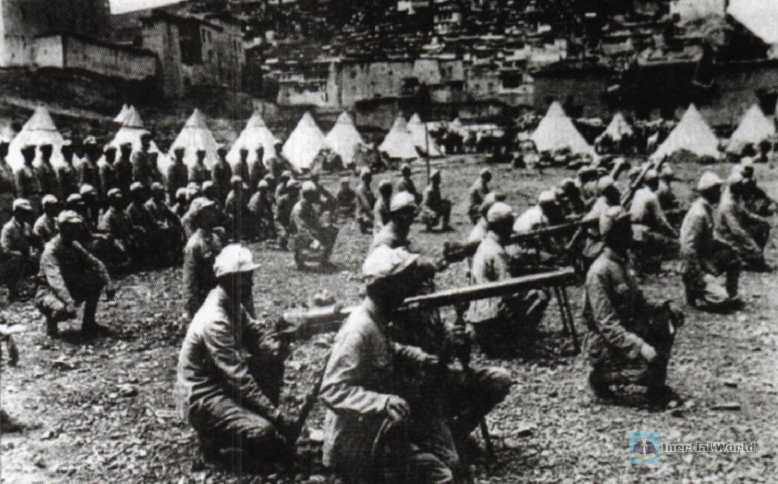
Foreign estimates of Tibet’s road transportation volume and troop maintenance capacity are indeed based on military perspectives. The PLA only invested 60,000 troops in Tibet to quell the rebellion, and there were some local cadres and transportation personnel. However, because the Communist Party and the People’s Liberation Army were able to win the support of the majority of the Tibetan population by liberating serfs, they were able to suppress the rebellion while implementing democratic reforms. With the inspiration and support of the work teams in various places, the vast majority of Tibetan serfs and slaves launched a face-to-face struggle against the lords, nobles and senior monks who had cruelly oppressed and exploited the serfs in the past, setting off a revolutionary storm unprecedented in the history of Tibet. In many manors, there were magnificent scenes of serfs and slaves gathering to burn their contracts of sale. The outcome of the counterinsurgency operation was quickly determined by the people’s support. When the People’s Liberation Army received widespread support, the rebels lost the social basis for their survival. By the end of 1961, all the Tibetan rebels had been eliminated except for a few thousand who fled to India and Nepal, and the rebellions in the Tibetan areas of the other four provinces had been completely suppressed before that.
Tibet’s special geographical conditions also determined that in addition to winning over the masses, the most important task of the counterinsurgency operation was to ensure transportation, that is, to implement the guiding ideology of "supply is more important than fighting" emphasized at the time. After the PLA suppressed the rebellion in Lhasa, it used the 54th Army as the main force to advance and destroy the rebels’ main base in Shannan. Then it focused on maintaining the "two lines" or the lifeline of highway transportation, and then implemented "suppression and reform" in different areas.
The Sichuan-Tibet Highway mainly passes through rugged mountain roads, and there are forest areas in many sections and several river bridges have to be crossed. The troops have always set up garrisons beside the bridges and mobilized local people to conduct reconnaissance and report information, so as to repel the attacks of the rebels again and again and ensure the safety of each bridge. When transporting on the Sichuan-Tibet Highway, combat vehicles and transport convoys are mainly used to travel in teams, accompanied by reconnaissance operations. Although the transportation volume is limited, it can still meet the needs of the troops along the line.

The terrain along the Qinghai-Tibet Highway is mostly flat, desolate and without trees, and most of them are uninhabited areas. The PLA’s aircraft patrols can easily find groups of rebels on the ground and bomb and strafe them. In the second half of 1959, the PLA launched the Maidika counterinsurgency operation in northern Tibet, and basically eliminated the rebels in northern Tibet. The convoys were rarely ambushed when passing through this road, so it became the main route for supplying Tibetan troops.
From 1959 to 1961, the PLA completed the task of transporting troops through the "two lines" and also completed the transportation of more than 100,000 tons of materials. At that time, under the conditions of the country’s difficult automobile ownership and fuel supply, more than 1,000 trucks were generally able to be transported on the road into Tibet. Although the speed was slow and fuel-intensive on the sandy road, and it was inconvenient to drive at night, at most nearly 100 cars could enter the hinterland of Tibet every day.
After entering 1960, the troops stationed in Tibet implemented zoned counterinsurgency, often marching hundreds of miles and fighting for several months. Only a small part of the supply could be solved by livestock, people’s backs and airdrops, and most of the supply still relied on cars. Every time a large force went out to attack, a considerable part of the force would be drawn out to lead Tibetan civilian workers to repair the emergency military roads, and to choose easy routes to shorten the time and avoid dangerous areas as much as possible. During the three-year counterinsurgency operation, 64 emergency military roads totaling 6,808 kilometers were built in Tibet, ensuring the supply of materials and combat mobility of the troops, and initially forming a highway transportation network in Tibet. It was said that the victory of the War to Resist U.S. Aggression and Aid Korea was half credited to the logistics department, and the achievements of highway transportation in the counterinsurgency operation in Tibet were also the same.
Highway upgrades and railway construction ensured Tibet’s construction and strengthening of border defense
After the Tibetan counterinsurgency ended, the People’s Liberation Army once reduced its garrison in Tibet to reduce the transportation burden. In the autumn of 1962, facing India’s encroachment and invasion of our border, the People’s Liberation Army was forced to launch a self-defense counterattack, relying on the Qinghai-Tibet and Sichuan-Tibet highways to supply the troops in the eastern section, and the Xinjiang-Tibet highway to supply the troops in the western section. Since the highway to the border is more than 2,000 kilometers away from the railway terminal, and the road conditions are poor, half of the load of a car going back and forth to the front line is gasoline consumed by itself, which makes it extremely difficult to support tens of thousands of troops for a long time. At that time, the vast majority of liberated serfs in Tibet were mobilized to assist the troops in transportation with animal power and human carrying, and finally helped the troops win the counterattack that lasted for a month.
From a military geographical perspective, the Qinghai-Tibet Plateau is China’s southwest barrier, but it has become the "bottleneck" of the Chinese military’s logistics system at that time. India’s overall military strength is not as good as China’s, but its transportation conditions at the border are much better than China’s. The Indian army’s advance to the Tibetan border is equivalent to "climbing" transportation, which is also very difficult. However, not far from the Indian side of the Sino-Indian border, the terrain gradually becomes flat, and behind it is the South Asian Plain, where there is a good road and railway network. The railway terminal is only about 100 kilometers away from the eastern section of the border. Once the war is prolonged, the gap in transportation between the two sides will have an increasingly greater effect. At that time, India was a large country with hundreds of millions of people, 650,000 active troops, and hundreds of thousands of reserve personnel. It was also supported by the United States and other major powers. Only three brigades were completely wiped out in the border battle. After approaching its own road and railway network, it was able to concentrate superior forces to counterattack. Therefore, the PLA quickly fought and withdrew from the border area and returned triumphantly after winning. my country was not only able to show its sincerity for peace, but was also called "extremely cool" by some foreign public opinion. It was also able to take the initiative in military affairs and avoid being passive. Later, some people made some "you don’t know how expensive firewood and rice are if you don’t manage the household" comments on this battle, especially the withdrawal of troops after the counterattack was successful. This was precisely because they did not understand the military geography of the snowy plateau at that time, especially the transportation conditions.

Due to the difficult economic conditions in the country from the 1960s to the early 1970s, there were only three roads leading to Tibet: Sichuan-Tibet, Qinghai-Tibet and Xinjiang-Tibet (of which the Xinjiang-Tibet Road could only transport goods to Ali), and they were all sandy roads. Not only was the transportation volume very limited, but it took about ten days to drive one way. The country wanted to maintain a large number of troops on the plateau and transport large equipment for construction, which would be difficult without railway transportation. As early as 1956, the central government formulated the issue of building a railway into Tibet, and construction began in Xining, Qinghai in 1958. Soon due to economic difficulties, the track laying reached Haiyan in Hubei, Qinghai in November 1960 and stopped.
Taking into account the need to change Tibet’s various construction projects from a "maintenance" type to a "development" type, railway construction was put on the agenda after the country’s economic conditions improved. On December 9, 1973, when Mao Zedong met with Nepal’s King Birendra who was visiting China, he lamented: "I can’t sleep if the Qinghai-Tibet Railway is not built. The Qinghai-Tibet Railway must be built, it must be built to Lhasa, and it must be built to the China-Nepal border. "In the same year, the construction of the Qinghai-Tibet Railway started again. In 1979, it was built to Golmud under the Kunlun Mountains. Then, due to the lack of funds and the unresolved problems in the permafrost zone, it was suspended for a long time in the north of the Kunlun Mountains.
Because the railway was difficult to pass, the central government allocated funds from 1975 to 1985 to carry out the asphalt transformation of the Qinghai-Tibet Highway, reaching the standard of a secondary highway with an annual transportation volume of 500,000 tons. The reconstruction project of the Qinghai-Tibet Highway started in 1975. It was an unprecedented black road pavement project in the high-altitude permafrost area in the world. At that time, the investment was 760 million yuan. It was a rare large project in the history of Chinese highways. By August 1985, the black road pavement project of the entire line was basically completed. This highway reconstruction project greatly improved the transportation efficiency and significantly increased the traffic density, with the highest traffic volume reaching 3,000 per day and night. More vehicles were added, and the driving speed was increased from 20 kilometers to 60 kilometers per hour. Previously, the large amount of fuel oil needed in Tibet every year was transported by cars traveling thousands of miles back and forth. The fuel consumed by the cars themselves on the road accounted for about 30% of the transportation volume. Since 1972, with the approval of Premier Zhou Enlai, the Golmud-Lhasa Oil Pipeline (abbreviated as the Golmud Pipeline) was built. It is the world’s highest altitude fixed pipeline for transporting refined oil. It was organized and constructed by the military, with a total length of more than 1,000 kilometers. By 1977, It was basically completed in 2010, which can greatly save fuel transportation costs and improve vehicle transportation efficiency.

The completion of the asphalt transformation of the Qinghai-Tibet Highway has increased the transportation volume into Tibet by several times compared with the sandy road surface, and the transportation time has also been accelerated by 3 times. For example, the driving time from Xining to Lhasa can be shortened from 9 days to 3 days. The increase in materials transported to Tibet has also provided much better conditions for local economic and national defense construction than in the past. However, large-scale and comprehensive construction still needs to be guaranteed by railway transportation.
With the rapid improvement of the country’s economic strength and scientific and technological level after the reform and opening up, the second phase of the Qinghai-Tibet Railway, namely the Golmud to Lhasa section, started in 2001: this section is 1,118 kilometers long, half of which is frozen land, with an investment of 262 The railway was built at a cost of 100 million yuan and officially opened to traffic in 2006. The completion of this railway has increased the volume of materials transported into Tibet by dozens of times, and the transportation cost per ton has dropped by two-thirds compared to highways. According to figures released by state media, the number of passengers and cargo sent by the Qinghai-Tibet Railway reached 16.556 million and 34.003 million tons respectively in 2018. Such a transportation capacity can enable tens of thousands of people and more than 100,000 tons of materials to enter Tibet "morning and evening", which is of great significance to economic construction and military transportation.
Once the railway is built and can transport tens of millions of tons of materials every year, all major projects in Tibet, including the construction of new airports, can be fully launched.

For example, the Dangxiong Airport built in 1956 After being abandoned in 1966, Tibet had only one Gonggar Airport in the south of Lhasa for a long time as a dual-use military and civilian airport. After entering the new century, a large number of construction tools and materials were transported from all parts of Tibet, and airport construction entered the fast lane. By 2010, in addition to the original Lhasa Gonggar Airport, Tibet had built and opened four airports in Qamdo Bangda, Nyingchi Milin, Ali Kunsha and Shigatse Heping. According to Xinhua News Agency, Tibet has built three new airports in recent years, namely Shannan Longzi, Shigatse Dingri and Ali Purang Airport, which has formed a dual-use military and civilian airport network throughout Tibet. Air supremacy in modern warfare is of great significance. In the past, the lack of airports in Tibet was a major defect affecting air defense in the southwest direction. Now this situation has been fundamentally changed.
After the Qinghai-Tibet Railway was completed, Tibet built two extension railways from Lhasa to Linzhi and Shigatse, and now the Sichuan-Tibet Railway has also started construction. Tibet’s modern transportation network, with railways as the main line, highways as the branch line, and aviation as the supplement, is becoming more and more complete. The modernization of transportation capacity not only lays the foundation for economic construction, but also enables the army to move quickly on a large scale, making it possible to "maintain fewer troops in peacetime and use more troops in wartime" on the border. Before the asphalt roads and railways were built, it was unimaginable for tanks to consume their very limited motor hours to march thousands of miles to reach the border. Now "tanks on the plateau" has become a reality.
Today’s appearance of Tibet, especially the traffic conditions, has undergone a "dramatic change" compared to when the People’s Liberation Army marched into the plateau. Now the integrated transportation network composed of asphalt roads, railways and aviation can maintain the modern high-level combined army operations. If you want to understand the process of Tibet’s liberation, construction and strengthening of border defense, you must first understand the evolution of the traffic conditions there, so that you can get a complete answer.


